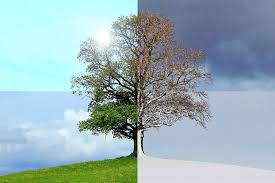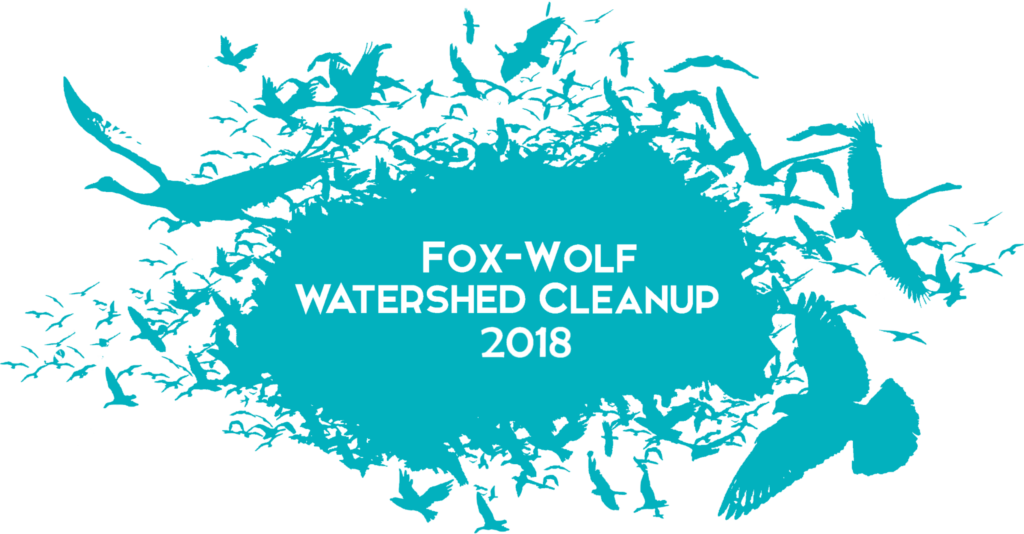Looking Forward – Here We Are, Already in Pre-spring
By Lynn Kuhns
March is one of the most striking and unpredictable of the transitional months. Where do we notice winter and its effects more than on our waterways, when so much water becomes so darned much ice?
Where better can we witness the drama and beauty of its dissolution than when the melt starts, returns, retreats with freezes, progresses… until all is liquid again?
Aside from the powerful, gravity-boosted large rivers, which have lots of energy to fight the freeze, and those waterways squeezed to rush into narrows, most surfaces of the Fox/Wolf watershed are now — as I write this on Feb. 26, 2018 —solid ice.
What was liquid blue-grey and transparent just last summer has become rock-hard and somewhere between opaque and crystal clear. All that wave and current motion ¾ the effects of wind on soft water — has stilled to solid. Even the availability of lake and rivers appears to be crystal-sealed — although ice anglers have a way of creating temporary portals.
Aside from the powerful, gravity-boosted large rivers, which have lots of energy to fight the freeze, and those waterways squeezed to rush into narrows, most surfaces of the Fox/Wolf watershed are now — as I write this on Feb. 26, 2018 —solid ice.
What was liquid blue-grey and transparent just last summer has become rock-hard and somewhere between opaque and crystal clear. All that wave and current motion ¾ the effects of wind on soft water — has stilled to solid. Even the availability of lake and rivers appears to be crystal-sealed — although ice anglers have a way of creating temporary portals.
March’s warmer temperatures will alter all that. It seems kind of simple. But if you’re the kind of person who can look at the essence of such things as seasonal change — like an artist, a poet, a scientist or a child might — that’s a lot of acreage, and tons of cubic yards of rather drastic change to consider.
as seasonal change — like an artist, a poet, a scientist or a child might — that’s a lot of acreage, and tons of cubic yards of rather drastic change to consider.
 as seasonal change — like an artist, a poet, a scientist or a child might — that’s a lot of acreage, and tons of cubic yards of rather drastic change to consider.
as seasonal change — like an artist, a poet, a scientist or a child might — that’s a lot of acreage, and tons of cubic yards of rather drastic change to consider. The freeze, the thaw, and all their complexities and variances are just some of the many wonders of these waters that we seek to learn about, protect, study, share and enjoy.
March heralds still more change, as it’s the first month behind the winter, that coldest season of the year that runs here from December to February.
According to Merrium-Webster, winter is “…the season between autumn and spring comprising in the northern hemisphere usually the months of December, January, and February or as reckoned astronomically extending from the December solstice to the March equinox.”
This year, March 20 signals the “official” start of spring. From now until summer we’re bound to be buffeted in a roller-coaster ride of dropping/rising air temperatures, sun and clouds, winds and quiet, precipitation quantities and other variables, as our planet tilts itself toward the sun and we prepare for play.
March heralds still more change, as it’s the first month behind the winter, that coldest season of the year that runs here from December to February.
According to Merrium-Webster, winter is “…the season between autumn and spring comprising in the northern hemisphere usually the months of December, January, and February or as reckoned astronomically extending from the December solstice to the March equinox.”
This year, March 20 signals the “official” start of spring. From now until summer we’re bound to be buffeted in a roller-coaster ride of dropping/rising air temperatures, sun and clouds, winds and quiet, precipitation quantities and other variables, as our planet tilts itself toward the sun and we prepare for play.
What’s next, weather wise? Heck, we don’t know.
What should I wear today? Wait and see… somewhere between shorts and a snowmobile suit… probably.
What’s there to do? Get ready for summer, or get outside and watch the ice melt, the rivers flow, the lowlands flood. Maybe find a way to help protect our precious waters.
What should I wear today? Wait and see… somewhere between shorts and a snowmobile suit… probably.
What’s there to do? Get ready for summer, or get outside and watch the ice melt, the rivers flow, the lowlands flood. Maybe find a way to help protect our precious waters.
Whether solid ice, or liquid, water nourishes so many facets of our lives. We study it, clean it up [See Fox-Wolf Watershed Alliance Cleanup*, below] and we recreate on it.
We ponder its future.
This March-time of change may also lead us to do what we can to make our own changes to benefit our waterways. The Fox-Wolf Watershed Alliance, county agencies, and local habitat and education organizations offer a way to start.
We ponder its future.
This March-time of change may also lead us to do what we can to make our own changes to benefit our waterways. The Fox-Wolf Watershed Alliance, county agencies, and local habitat and education organizations offer a way to start.
Why not now… to beat the thaw?
Join in, contribute to the April 21 Fox-Wolf Watershed Cleanup.
 Each year, hundreds of volunteers visit one of 50 or more sites on the Fox and Wolf rivers and lakes Winneconne, Poygan, Butte des Morts and Winnebago to remove garbage and other debris.
Each year, hundreds of volunteers visit one of 50 or more sites on the Fox and Wolf rivers and lakes Winneconne, Poygan, Butte des Morts and Winnebago to remove garbage and other debris. Beyond that, another goal of this annual cleanup is to build a sense of community as we enhance our understanding of environmental stewardship.
What to expect? Well, great support and event coordination. Volunteers start the morning at assigned sites, and then head out to pick up garbage and debris. From noon on, volunteers and organizers gather at Pierce Park, Appleton, for the Cleanup Picnic and lunch, music, bounce-houses, costumed characters and games.
To sign up, go to https://fwwa.org/2018/02/19/registration-open-fox-wolf-watershed-cleanup/ or Google FWWA 2018 cleanup.

Article written and provided by Lynn Kuhns. Lynn Kuhns, a free-lance writer with more than 30 years professional writing and publishing experience, lives and writes in Winneconne, WI. Widely read in magazines, newspapers, literary journals and other publications, Kuhns’ articles and columns often relate to Wisconsin’s habitats, outdoor recreation and the interactions of nature with the art of being human. She designs and teaches creative-writing workshops and classes, and is available for speaking engagements. Contact: writewoodz@charter.net; phone 920-582-0233.





